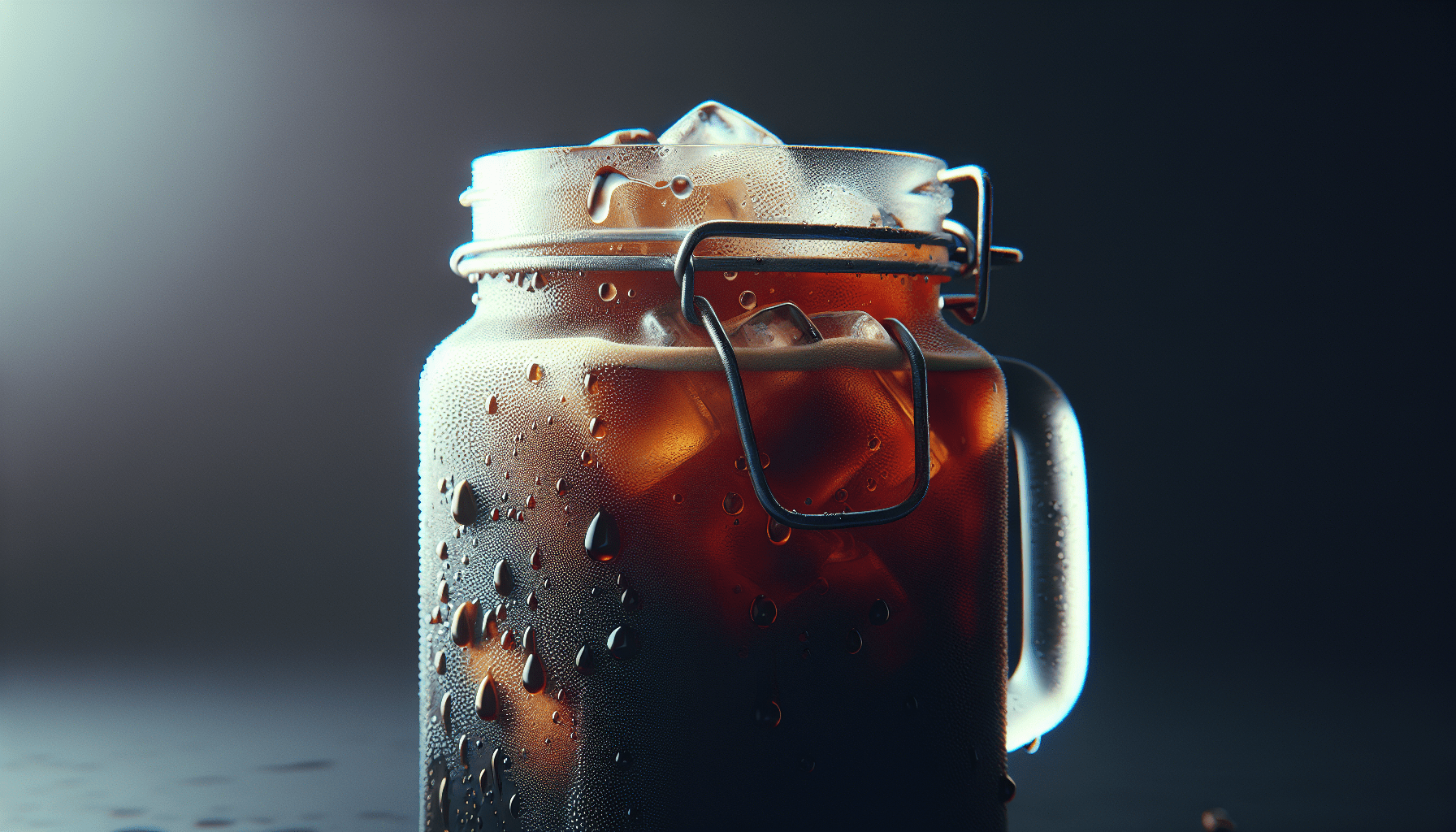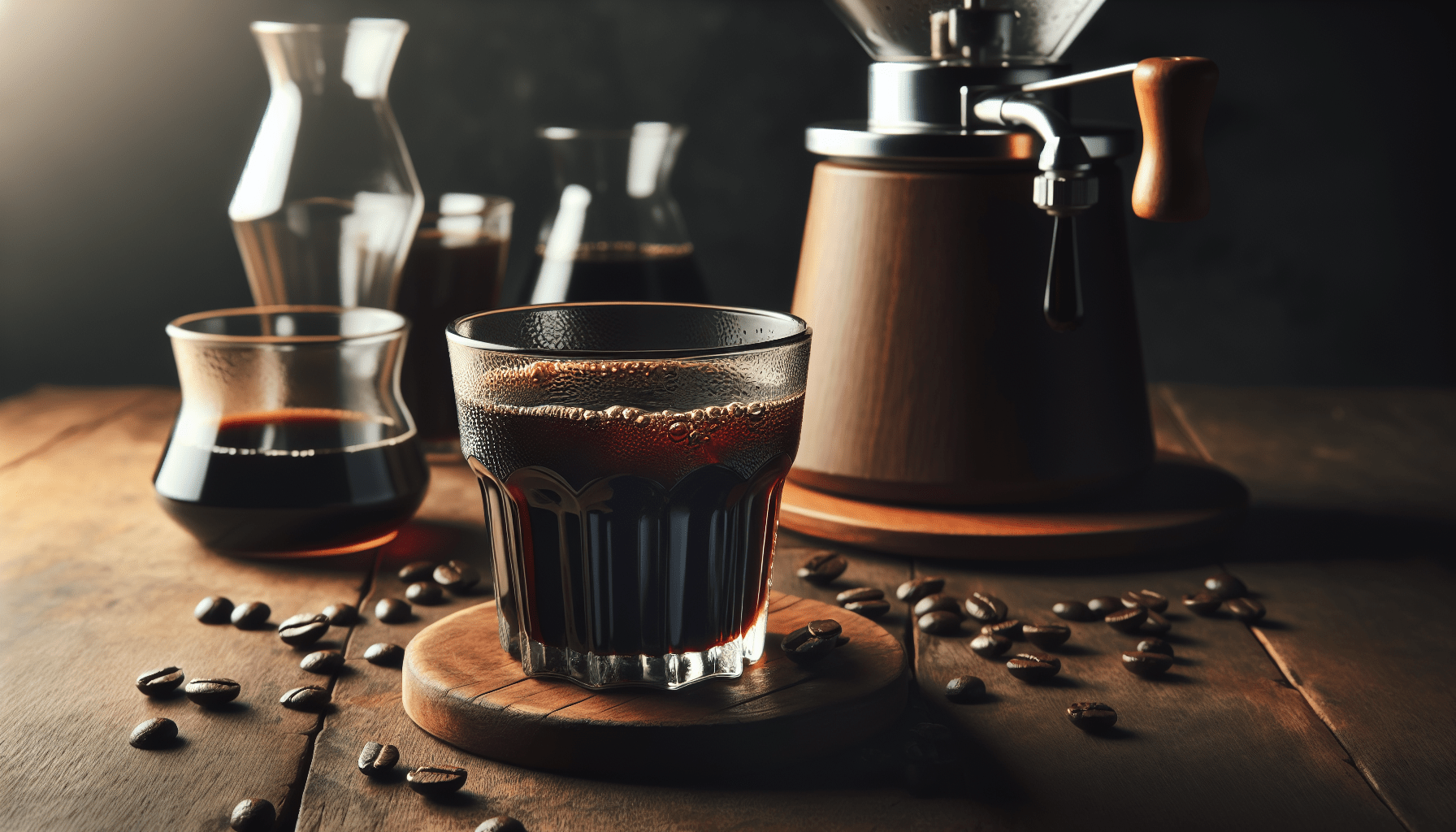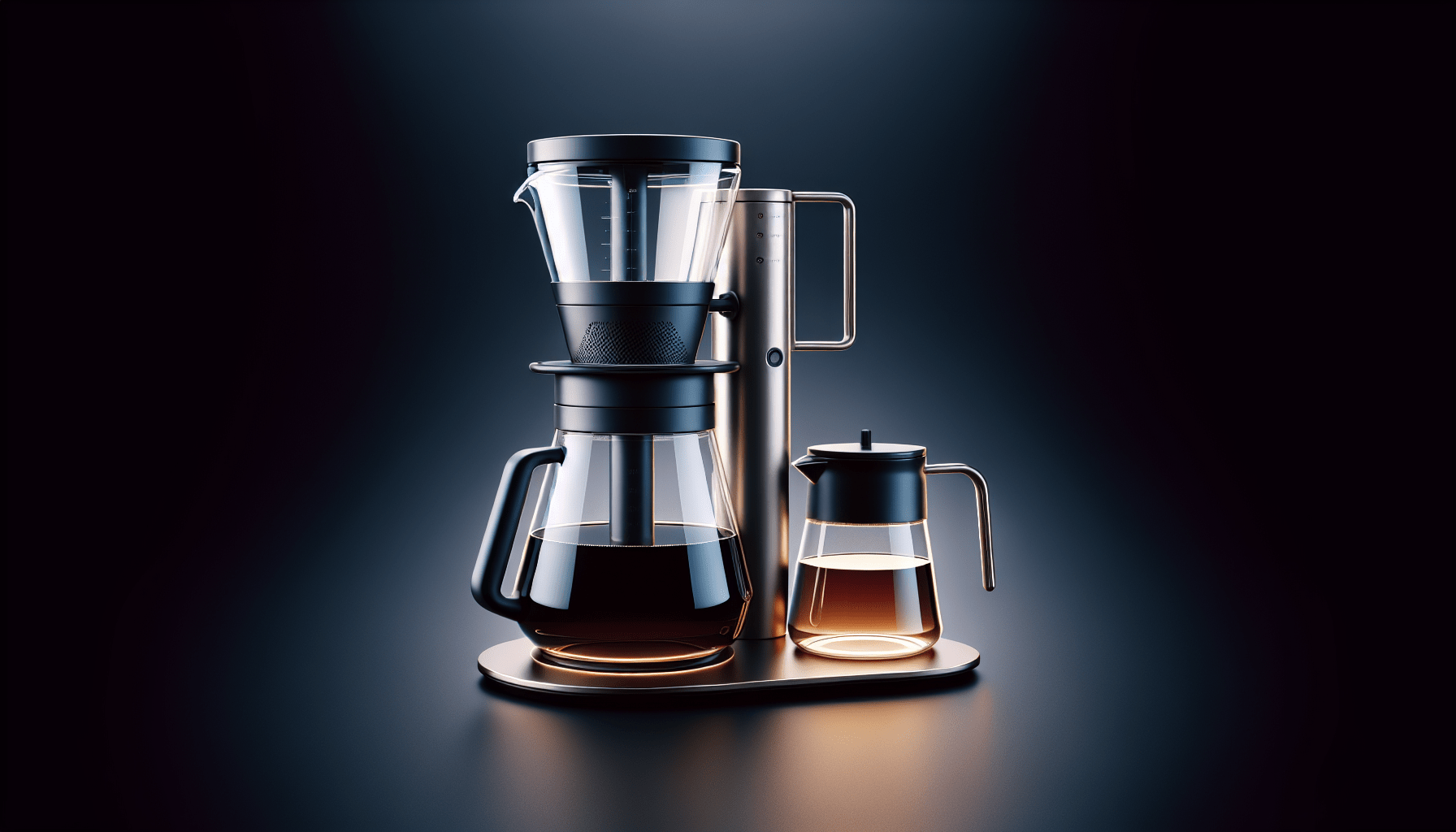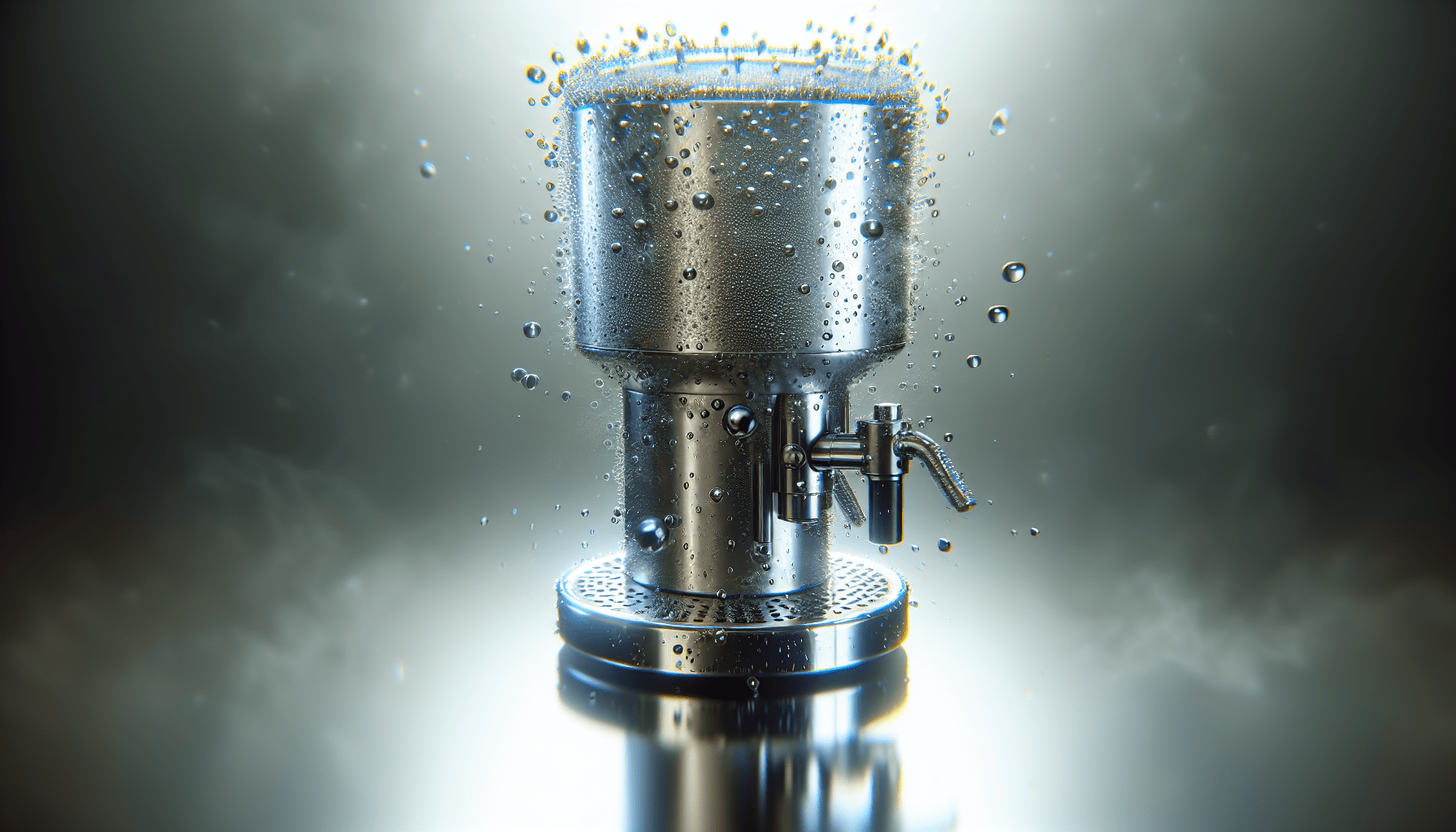So you’ve successfully made a delicious batch of cold brew using your trusty cold brew maker, but now you find yourself wondering just how to store it. No worries, we’ve got you covered! Whether you plan on savoring it slowly over the next few days or want to keep it fresh for a longer period of time, we’ll provide you with some handy tips and tricks to ensure that your cold brew stays at its peak flavor for as long as possible. With a few simple steps, you’ll be able to preserve that smooth and refreshing goodness, ready to enjoy whenever you please. Let’s dive in and discover the secrets of storing your cold brew made with a cold brew maker, shall we?
Understanding Cold Brew
What is Cold Brew?
Cold brew is a delicious and refreshing way to enjoy coffee, especially during the hot summer months. Unlike traditional hot brewed coffee, cold brew is made by steeping coffee grounds in cold or room temperature water for an extended period of time, typically 12 to 24 hours. This slow extraction process results in a smoother, less acidic coffee with a naturally sweet flavor.
Benefits of Cold Brew
There are several benefits to making and enjoying cold brew. Firstly, the low acidity of cold brew makes it easier on the stomach, minimizing the risk of heartburn or acid reflux. Additionally, the slow extraction process preserves the natural oils and flavors of the coffee beans, resulting in a more nuanced and less bitter taste. Cold brew is also highly customizable, allowing you to experiment with different types of coffee beans, ratios, and flavor additions to create your perfect cup of coffee.
Different Methods to Make Cold Brew
There are various methods to make cold brew, each offering a slightly different brewing experience. Some popular methods include using a French press, a mason jar, or a specialized cold brew maker. The choice of method largely depends on personal preference and available equipment. Regardless of the method chosen, the basic principle remains the same – steeping coffee grounds in cold water for an extended period of time to extract the rich flavors.
Storing Cold Brew
Choosing the Right Container
When it comes to storing your cold brew, selecting the right container is crucial to maintaining its freshness and flavor. It is best to choose a container that is made of glass or food-grade plastic, as these materials do not react with the coffee and will not alter the taste. Additionally, make sure that the container has a tight-fitting lid to prevent air from entering, which could cause the coffee to oxidize and lose its flavor.
Refrigeration
Refrigeration is the key to keeping your cold brew fresh for an extended period of time. After preparing your cold brew, transfer it to a clean and airtight container and place it in the refrigerator. The cold temperature of the refrigerator slows down the oxidation process, preserving the flavors of the coffee. It is important to note that cold brew is best consumed within 1 to 2 weeks of refrigeration to ensure optimal taste.
Avoiding Contamination
To prevent contamination and maintain the quality of your cold brew, it is essential to follow proper hygiene practices. Make sure to thoroughly clean all equipment used in the brewing process, including the container, filters, and any other utensils. Additionally, avoid cross-contamination by storing cold brew separately from other food items in the refrigerator.
Tips for Storing Cold Brew
Keep It Sealed
To maximize the shelf life of your cold brew, it is crucial to keep it properly sealed at all times. Oxygen exposure can lead to flavor degradation and spoilage. Therefore, always ensure that the container is tightly sealed before storing it in the refrigerator. If using a container with a screw-on lid, make sure it is securely tightened to prevent any air from getting in.
Use a Dark Container
Light can have a negative effect on the flavors of cold brew, causing it to turn stale more quickly. Therefore, it is recommended to store your cold brew in a dark-colored container or one that is opaque. This will help to minimize exposure to light and maintain the freshness of the coffee for a longer period of time.
Store in Small Portions
If you frequently enjoy cold brew and want to maintain its freshness, consider storing it in small portions rather than in one large container. This allows you to open and use only what you need at a given time, without exposing the rest of the cold brew to oxygen each time you open the container. Portioning out your cold brew also helps in avoiding wastage and guarantees a consistently fresh taste.
Properly Sealing and Labeling
Using Airtight Containers
Investing in airtight containers is a great way to ensure the longevity of your cold brew. Airtight containers create a seal that prevents air from entering and coming into contact with the coffee, thus preserving its flavors for a longer period of time. Look for containers specifically designed to be airtight, with features such as silicone gaskets or locking mechanisms to create a strong seal.
Adding Labels
To avoid any confusion or mix-ups in your refrigerator, it is helpful to label your containers of cold brew. Simply write the date of preparation on the label and affix it to the container. This way, you can easily keep track of how long the cold brew has been stored and ensure that you use the oldest batch first. Labels also come in handy if you have different flavor variations of cold brew stored, allowing you to quickly identify your preferred choice.
Refrigeration Timing
How Long Can Cold Brew Be Stored in the Refrigerator?
When stored properly in the refrigerator, cold brew can maintain its freshness and flavor for up to two weeks. However, it is important to note that the taste may gradually change over time, becoming less vibrant and more muted. For the best flavor experience, it is recommended to consume your cold brew within the first week of refrigeration. After the two-week mark, it is advisable to discard any remaining cold brew to avoid any potential health risks.
Signs of Spoilage
While properly stored cold brew can last for up to two weeks, it is essential to recognize the signs of spoilage to ensure your safety and enjoyment. If you notice any unusual odors, mold growth, or a sour taste, it is best to discard the cold brew immediately. These are indications that the coffee has gone bad and consuming it can lead to adverse health effects.
Freezing Cold Brew
When and Why Should You Freeze Cold Brew?
Freezing cold brew is an excellent option if you want to extend its shelf life beyond two weeks. Freezing not only prevents spoilage but also allows you to have a ready-to-use supply of cold brew whenever you need it. Freezing is particularly useful if you have made a large batch of cold brew or want to stock up for future use.
Proper Freezing Techniques
To freeze cold brew, start by transferring it to a freezer-safe container. It is crucial to choose a container with enough headspace to accommodate expansion as liquids expand when frozen. Leave about an inch of space at the top of the container to allow for expansion without the risk of the container bursting. Once the cold brew is properly stored in the freezer, it can last for up to three months without significant loss of flavor.
Thawing and Reheating Cold Brew
Thawing Cold Brew
When you’re ready to enjoy your frozen cold brew, it’s important to thaw it properly to preserve its flavor and quality. The best way to thaw cold brew is to transfer the container from the freezer to the refrigerator and let it thaw overnight. This gradual thawing process ensures that the coffee retains its taste without any significant changes. Avoid thawing the cold brew at room temperature or using a microwave, as these methods can compromise the flavor and consistency.
Reheating Cold Brew
Reheating cold brew is not recommended, as heating the coffee can alter its taste and result in a more bitter and less enjoyable brew. Cold brew is best enjoyed chilled or over ice. If you prefer a warm cup of coffee, consider using the thawed cold brew as a base and adding hot water or warm milk to achieve the desired temperature without compromising the flavor.
Alternative Storage Methods
Using Ice Cube Trays
If you prefer your cold brew on the rocks but want to avoid dilution, using ice cube trays can be a game-changer. Simply pour your cold brew into the trays and freeze them. The resulting coffee cubes can then be used to chill your cold brew without watering it down. This method is perfect for those who enjoy sipping on their cold brew slowly, as the coffee cubes melt gradually and maintain the strength of the brew.
Making Cold Brew Concentrate
Another alternative storage method is to prepare a cold brew concentrate. By using a higher coffee-to-water ratio during the brewing process, you can create a concentrated version of cold brew. This concentrate can then be stored in the refrigerator in a sealed container and diluted with water or milk to your desired strength whenever you want a fresh cup of cold brew. The concentrated form allows for a longer shelf life and provides the flexibility to customize each serving.
Ready-to-Drink Bottles
If you’re frequently on the go or want the convenience of pre-packaged cold brew, ready-to-drink bottles are a great storage option. These bottles typically come in single-serve portions and can be stored at room temperature or in the refrigerator, depending on personal preference. Ready-to-drink cold brew is perfect for those busy mornings when you don’t have time to prepare your own batch.
Troubleshooting Storage Issues
Preventing Dilution
If you find that your cold brew becomes diluted when stored in the refrigerator, there are a few steps you can take to prevent this issue. One option is to use coffee ice cubes instead of regular ice cubes when serving your cold brew. Another solution is to make a stronger batch of cold brew by increasing the coffee-to-water ratio. This way, even as the ice melts, the flavor of the coffee remains intact.
Preventing Bitterness
Bitterness in cold brew can occur if the coffee is steeped for too long or the grind size is too fine. To prevent bitterness, follow the recommended steeping time for your chosen method and experiment with different grind sizes to find the right balance. Additionally, proper storage in an airtight container and refrigeration can help prevent the development of bitterness over time.
Removing Sediment
If you notice sediment in your cold brew, it is likely due to the grind size of the coffee or the use of a less effective filtration method. To remove sediment, consider using a finer grind or upgrading to a higher-quality filter. Cold brew should be smooth and free of any grittiness, so adjusting the brewing process can help achieve the desired result.
Conclusion
Keeping Your Cold Brew Fresh
Proper storage techniques are crucial for maintaining the freshness and flavor of your cold brew. From selecting the right container and refrigerating it correctly to utilizing freezing methods and troubleshooting issues, you now have a comprehensive understanding of how to store your cold brew effectively. By following these tips and experimenting with different storage techniques, you can extend the shelf life of your cold brew and ensure that each cup is as delicious as the last. So go ahead, brew your perfect batch of cold brew and savor it anytime you desire!




